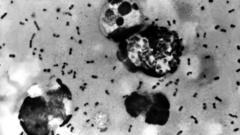In a startling announcement, health officials from Coconino County, Arizona, confirmed on Friday that a resident has died from pneumonic plague, marking the first recorded fatality from the disease in the county since 2007. The Coconino County Health and Human Services revealed that previous cases often resulted from interactions with infected animals.
The plague, historically notorious as the "Black Death" which ravaged Europe in the 14th century, is now infrequently reported in humans. It typically yields an average of seven cases annually in the United States, as per the Centers for Disease Control and Prevention (CDC). Despite the seriousness of pneumonic plague, health officials have assured that the risk to the wider public remains low.
Coconino County Board of Supervisors Chair Patrice Horstman expressed condolences, stating, "Our hearts go out to the family and friends of the deceased. We are keeping them in our thoughts during this difficult time. Out of respect for the family, no additional information about the death will be released." Pneumonic plague causes severe lung infections and is linked to the bacterium Yersinia pestis.
The CDC distinguishes between various forms of the plague, with bubonic plague being the most prevalent form, typically resulting from flea bites. Pneumonic plague, which poses the highest risk, can spread to the lungs from other untreated forms. Symptoms for the bubonic variant commonly appear within two to eight days and include fever, chills, headaches, weakness, and swollen lymph nodes.
Preventative measures against contracting the plague involve several practical steps, such as utilizing DEET-based insect repellents to safeguard against flea bites, steering clear of dead animals, avoiding contact with infected tissues, and limiting close interactions in crowded areas where recent cases have been documented. The UK government has noted that the illness is virtually absent from the region, making the likelihood of its occurrence extremely low for returnees.
In light of this grave situation, a reminder of the importance of health awareness and preventive actions in minimizing the risk of plague transmission is paramount.




















